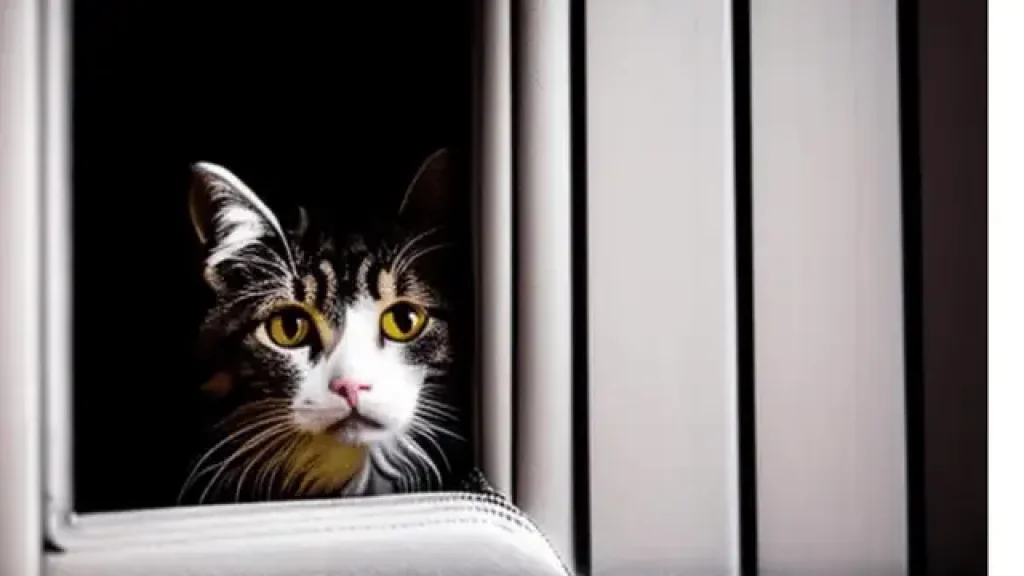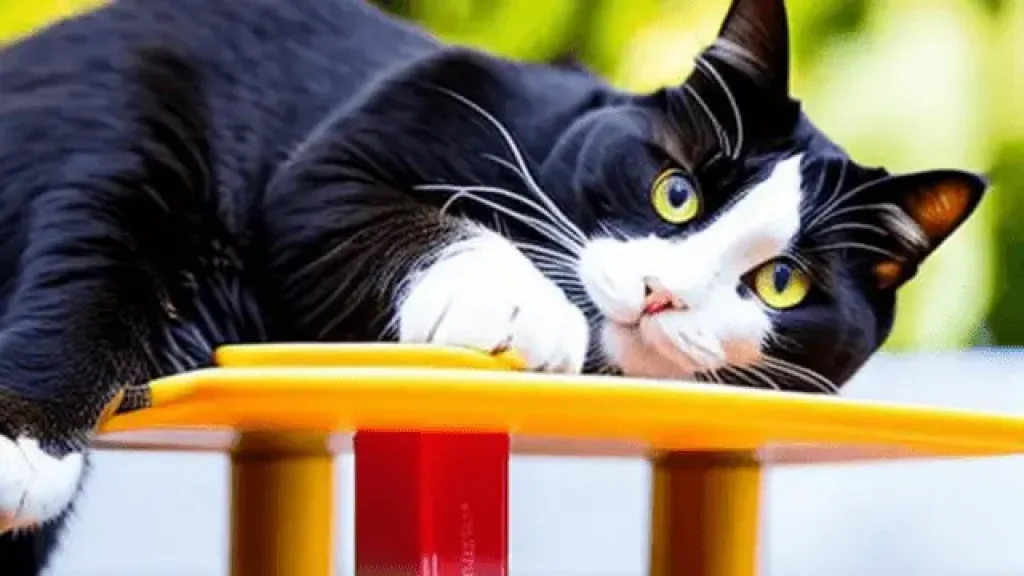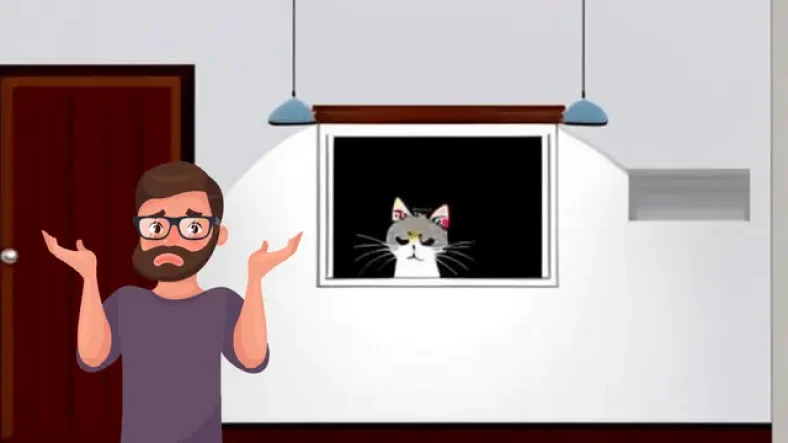Do you wish that your kitty would want to cuddle more? It can be super puzzling when cats don’t seem to enjoy being close!
We can help shed some light on this tricky situation and provide tips to understand how to interact with your favorite feline.
Cats have personalities all their own, just like people. That means figuring out why a particular cat isn’t into snuggles is unique to each pet.
There could be a medical-related problem, fear, or general preference at work – although it isn’t always easy to tell what’s going on in their heads!
It’s important to create a bond between pets and their humans that makes us both feel comfortable.
Whether your cat loves snuggling or prefers more alone time, this article will hopefully help you better understand the reasons why and give you advice on how to develop a relationship with your furry pal.
Ready to learn more? Let’s dive in!
Contents
Reasons Cats May Not Cuddle
Cats are usually known as cuddly creatures, but sometimes they may not be in the mood for a snuggle. Understanding why your feline friend may not feel like curling up with you can help make them more comfortable and create a better bond between the two of you.
There are many explanations for why cats don’t want to cuddle, ranging from physical changes to behavioral ones – let’s take a closer look at these reasons.
One explanation could be that your cat is simply too old or ill to enjoy being held close due to physical limitations. If this is the case, then it’s best to respect their boundaries and try other methods, such as petting them instead.
Another reason could be that they’re feeling stressed out; perhaps there was an upsetting change in their environment, or something else happened that made them uncomfortable around people.
It’s important to pay attention when your kitty starts acting differently so you can work on calming them down before attempting any cuddles again.
Finally, some cats just aren’t fans of being hugged and prefer spending time alone instead – understanding this will help prevent any potentially awkward moments! Although we all love our furry friends, respecting their wishes should always come first.
Now that we know what might cause cats to dislike cuddling, let’s explore ways in which we can understand our cat’s discomfort and improve the situation going forward.
Understanding Your Cat’s Discomfort

It’s important to try and understand why your cat may not be interested in cuddling. Cats are creatures of habit, so if they’re feeling uncomfortable due to an environmental or physical change, it might make them less likely to want to snuggle up with you.
Here are some ways to help identify potential sources of discomfort for your kitty:
- Observe Your Cat’s Behavior: It can be helpful to monitor changes in your cat’s behavior that could indicate distress.
Signs like hiding away more often than usual or avoiding interaction may be a sign that something is wrong. - Consider the Environment: Changes in environment, such as new furniture or loud noises, can be stressful for cats;
likewise, familiar sights or sounds from previous homes can lead to emotional disruption too. - Monitor Physical Changes: If you notice any unexpected physical changes, such as weight loss or an increase in shedding, this could suggest underlying issues causing discomfort.
Taking your cat for regular check-ups at the vet is key here! - Keep Up With Grooming & Cleanliness: Lastly, ensure your cat feels comfortable by making sure their bedding and litter tray are kept fresh and clean – cats hate being messy just as much as we do!
Understanding how cats perceive things differently from us humans will help put into perspective why they might not feel comfortable around certain situations or people.
The next step is learning about physical changes in your cat, which may contribute to its lack of affection for cuddles.
Physical Changes In Your Cat
As your cat ages, you may notice physical changes in them. Their fur can start to thin and shed more than usual.
Additionally, they may not groom themselves as much or move around with the same agility they once had. Older cats are also prone to developing health issues that can cause difficulty moving around and make it hard for them to cuddle up close like before.
It’s important to keep an eye on any medical problems that develop in senior cats so that you can adjust their care accordingly.
Aging cats often require different kinds of care compared to younger ones – particularly when it comes to dietary needs and activities.
If you find yourself worried about their physical condition, don’t hesitate to contact your vet for advice on how best to look after them during this stage of life.
These physical changes could be why your cat is no longer interested in cuddling as much as it used to.
As pet owners, understanding how age affects our furry friends helps us provide the necessary comfort and love needed throughout the lifetime of a beloved feline companion.
Moving onto behavioral changes in your cat, these signs should also be taken into consideration…
Behavioral Changes In Your Cat
Now that we’ve discussed physical changes in your cat let’s take a look at some of the behavioral changes you may notice. Cat behavior is complex and can often be hard to interpret.
One common sign of stress or anxiety in cats is cuddle aversion – your kitty may suddenly seem less interested in being held or petted than it used to be.
This could indicate underlying feelings of fear or insecurity, so it’s important to pay attention and try to understand why this might be happening.
Cat communication is subtle, but there are certain signs that cats use to express themselves.
If your cat starts displaying behaviors such as excessive grooming, hiding away, meowing more frequently, or avoiding interaction with people or other pets, these could all be indications that something is wrong.
It’s important to observe any changes in their behavior carefully and take steps to address the issue if necessary.
Creating A Comfortable Environment For Your Cat
Creating a comfortable environment for your cat is key to getting them more receptive to cuddling.
Start by ensuring that the pet’s space has all the necessary items, such as food and water dishes, litter boxes, scratching posts, toys, etc.

It’s also important to provide plenty of places for rest and relaxation. Cats like having their own hideaways where they can curl up in safety and comfort.
Cats are quite independent creatures who often prefer their alone time rather than affection from their humans. Therefore, it’s important to give your cat alternatives to cuddling if they’re not interested.
Providing interactive toys or playtime with you will help satisfy your kitty’s need for mental stimulation while also providing an outlet for physical activity.
Additionally, spending quality time brushing and petting your cat is another way to show them affection without needing them to cuddle with you directly.
Since cats have their own unique behaviors and preferences when it comes to affection, it’s important to observe how your pet responds before trying anything new.
By monitoring their body language and behavior around certain activities, you’ll be able to better understand what kind of environment makes them feel most secure and loved.
With this knowledge in hand, you can then move on to showing affection in non-cuddling ways that work best for both you and your feline companion!
Showing Affection In Non-Cuddling Ways
Cats are complex creatures, and some of them may not enjoy the comfort of cuddling. Fortunately, there are plenty of other ways to show your feline friend affection.
From petting cats safely to providing positive reinforcement with cat toys and treats, there is a multitude of alternatives for connecting with your kitty in meaningful ways.
Here’s how you can interact with your cat without needing cuddles:
- Petting Cats Safely: When it comes to showing love through physical contact, many cats appreciate being stroked or scratched on their chin and cheeks rather than having their back rubbed.
Petting should be done gently so as not to overwhelm your cat. Let her guide you by paying attention to her body language; if she starts squirming away from you, then it’s time to stop petting. - Positive Reinforcement With Cat Toys: Playing with a favorite toy can help strengthen the bond between owner and cat while also providing mental stimulation that encourages both exercise and exploration.
You can use interactive toys like fishing rod-style lures or laser pointers to get your cat up and moving around – just make sure they’re safe for her size! - Treat Rewards: Treats provide an easy way to reward good behavior in cats and reinforce positive interactions.
Choose high-quality treats specifically made for felines that contain real meat protein instead of fillers like corn starch or wheat gluten, such as freeze-dried liver bits or chicken jerky treats.
No matter what type of non-cuddling activity you choose, always remember to keep things fun and engaging for both yourself and your cherished companion. Your furry pal will be sure to thank you with purrs (or meows) of appreciation!
FAQs
Can I train my cat to enjoy cuddling?
While some cats may learn to enjoy cuddling with patience and positive reinforcement, others may never feel comfortable with it. It’s important to respect your cat’s boundaries and preferences and find alternative ways to bond with them.
Why does my cat sometimes cuddle and sometimes avoid me?
Cats have their own personalities and preferences and may enjoy different amounts of physical affection at different times. Pay attention to your cat’s body language and behavior to understand when they may be in the mood for cuddles and when they may want their space.
My cat used to love cuddling but now avoids it – is something wrong?
Physical changes or underlying health issues can affect a cat’s desire to cuddle. It’s important to take your cat to the vet for regular check-ups and to monitor any changes in their behavior or physical condition.
Can playing with my cat replace cuddling as a form of affection?
Absolutely! Playing with interactive toys or engaging in other activities that your cat enjoys can be just as effective as cuddling in strengthening the bond between you and your pet.
What should I do if my cat seems stressed or anxious?
It’s important to identify the source of your cat’s stress or anxiety and make adjustments to their environment as needed. Providing a comfortable and safe space, regular play and exercise, and positive reinforcement with treats can all help alleviate stress in cats. If the problem persists, consult with your veterinarian for further advice.
Conclusion
It is not always easy to understand why our cats do not want to cuddle with us. But, by observing and understanding their behavior, we can make changes in our homes and how we interact with them so that they are more comfortable when it comes to cuddling.
We need to be patient and recognize that there may never come a time when our cat decides they like to cuddle. We should still show them affection through other means, such as petting or playing games. This way, even if they don’t actually get close enough for us to snuggle up together, we will have found a way of showing each other love that works for both of us.
At the end of the day, all we can do is keep trying different approaches until something clicks – just like most relationships! There may be setbacks along the way, but with patience and persistence, I believe that one day my cat and I will find a way to share special moments without having to resort to traditional forms of physical contact.


